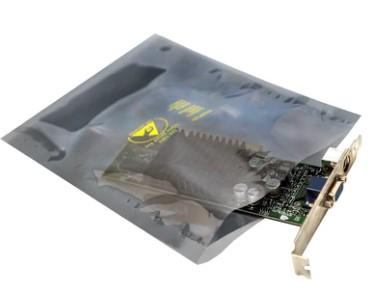In today's digital age, our lives are heavily reliant on electronics. From smartphones to laptops, these devices play a crucial role in our daily routines. However, one often overlooked threat to these gadgets is electrostatic discharge (ESD). To safeguard electronic components from ESD damage during storage and transportation, static shielding bags come to the rescue. In this article, we'll delve into how these specialized bags minimize the build-up of ESD charges and protect our precious devices.
What are Static Shielding Bags?
Static shielding bags, also known as ESD bags or anti-static bags, are specially designed packaging materials crafted to prevent the buildup of electrostatic charges on sensitive electronic components. Unlike standard plastic bags, static shielding bags incorporate multiple layers of materials with differing electrical properties to create a barrier against ESD.

How Do They Work?
-
Material Composition: Static shielding bags are typically constructed from multiple layers of plastic, including a dissipative outer layer, a metalized polyester layer, and a non-conductive inner layer. This multi-layered structure is what provides superior protection against ESD.
-
Faraday Cage Effect: The metalized polyester layer acts as a Faraday cage, which effectively dissipates and neutralizes any external electrostatic charges. When an ESD event occurs, the metal layer conducts the charge around the bag's contents, preventing any harm to the enclosed electronic devices.
-
Dissipative Properties: The outer layer of the bag is engineered to be dissipative, meaning it allows any static charges to gradually bleed off rather than accumulate on the surface. This helps to minimize the risk of static discharge while handling or storing the bag.
Benefits of Static Shielding Bags
-
ESD Protection: The primary benefit of static shielding bags is their ability to provide reliable protection against electrostatic discharge. By creating a barrier that blocks external ESD events, these bags safeguard electronic components from potential damage.
-
Moisture Barrier: In addition to ESD protection, static shielding bags often feature moisture barrier properties. This helps prevent moisture ingress, which can be equally detrimental to sensitive electronic devices.
-
Transparency: Many static shielding bags are transparent, allowing easy visual inspection of the enclosed components without the need to open the bag. This is particularly advantageous for inventory management and quality control purposes.
-
Customizable Sizes: Static shielding bags come in various sizes and configurations to accommodate different types and sizes of electronic components. Whether it's a small integrated circuit or a large motherboard, there's a static shielding bag to fit every need.
Best Practices for Using Static Shielding Bags
-
Proper Sealing: Ensure that the static shielding bag is properly sealed to maintain its effectiveness. Use heat sealers or anti-static tape to create a secure closure.
-
Handling Precautions: When handling electronic components, always use proper ESD protection measures such as wrist straps and grounded work surfaces. This helps minimize the risk of ESD damage during assembly or maintenance.
-
Storage Environment: Store static shielding bags in a clean, dry environment away from excessive heat, moisture, and static sources. This helps preserve their integrity and effectiveness over time.
By utilizing advanced materials and engineering principles, these specialized bags create a barrier against ESD events, ensuring the integrity and functionality of our electronic devices. Incorporating static shielding bags into your storage and transportation practices is a simple yet effective way to safeguard your valuable electronics and prevent costly damage.

